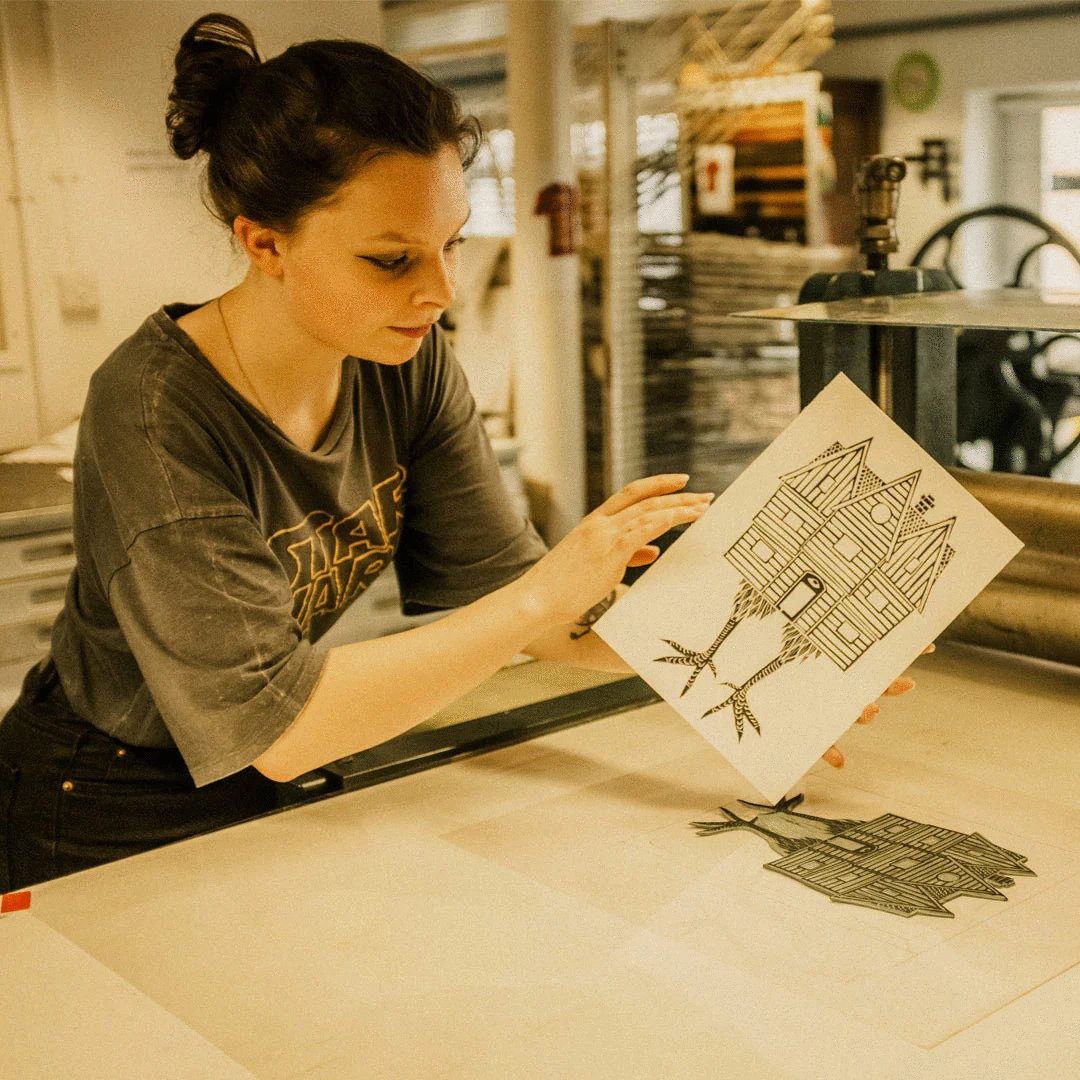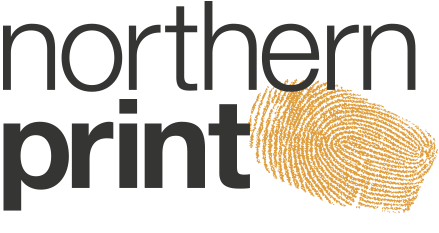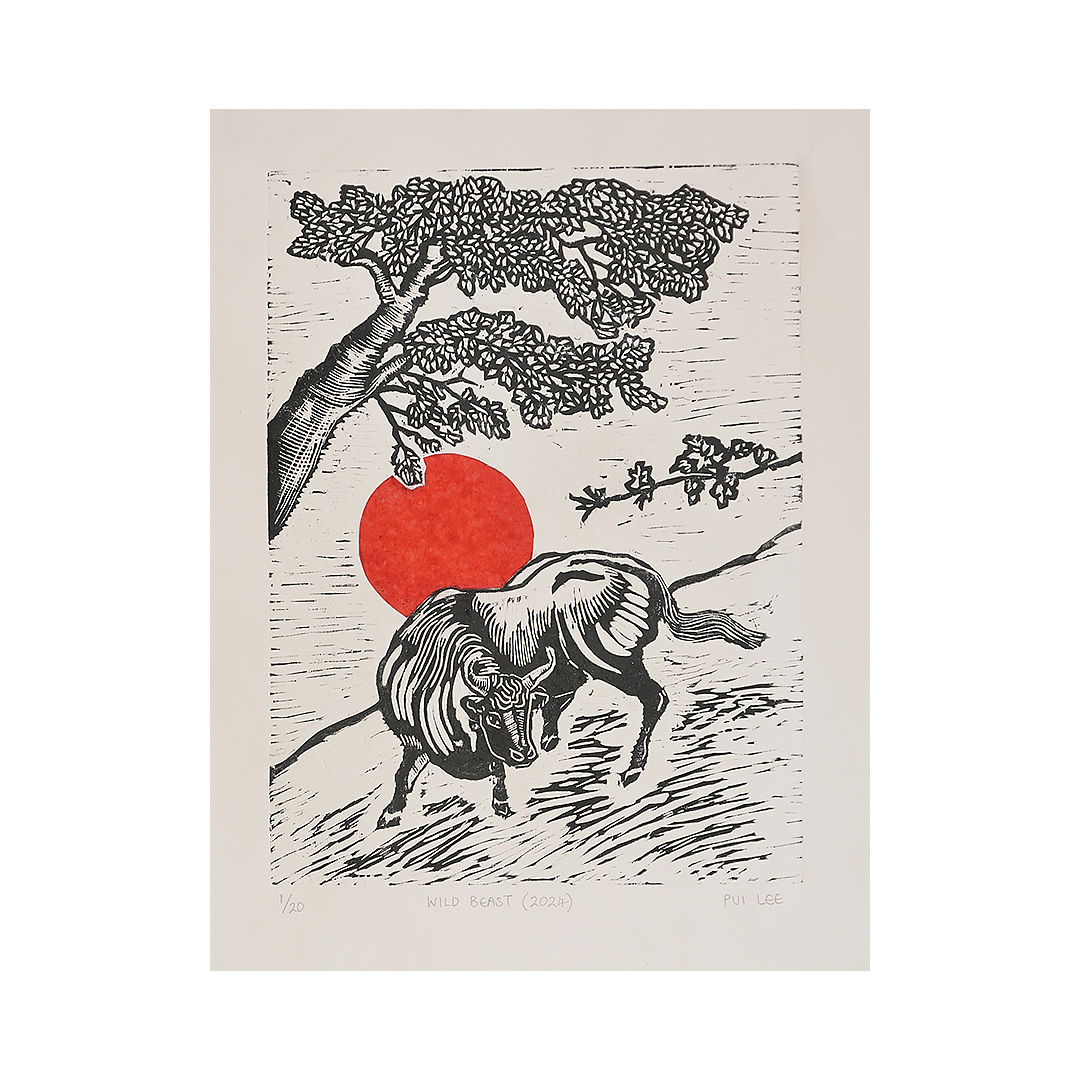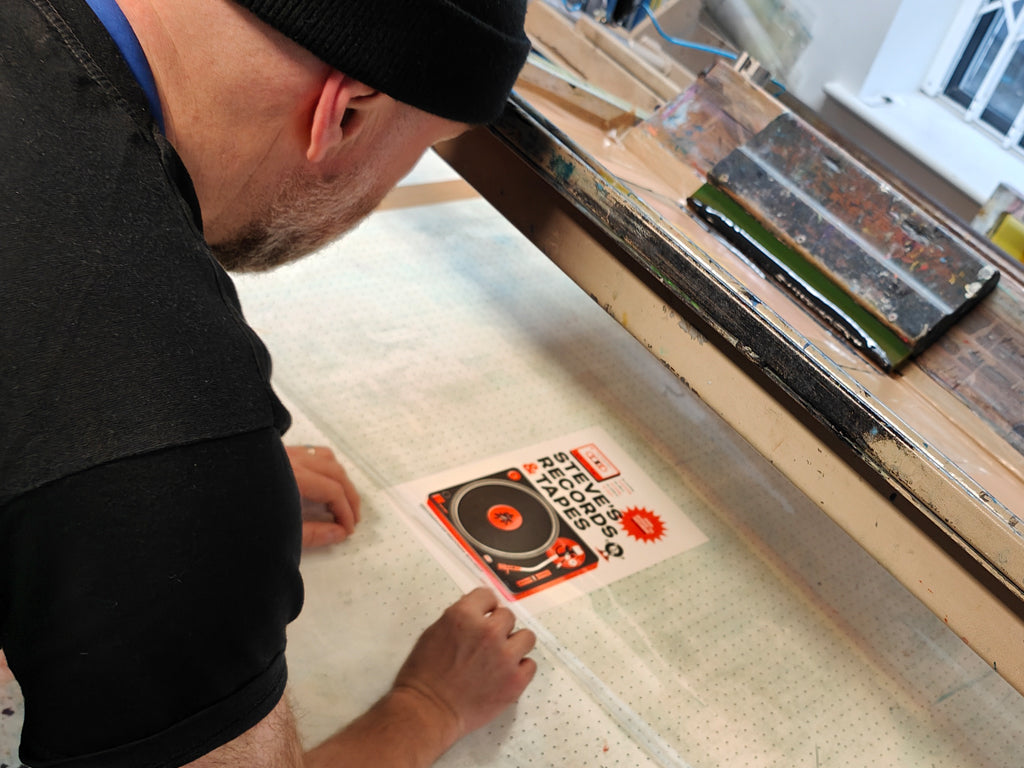Wild Beast (2024)
Wild Beast (2024)
Artist: Pui Lee
Medium: Woodcut & Chine Collé
Dimensions: Paper Size 38 x 29.4cm / Image Size 29.9 x 22.4cm
Edition: 1/20
Postage & Packing
Postage & Packing
£9 UK postage & packing in secure postal tube.
By selecting this option, you confirm that you want to apply Gift Aid.
Couldn't load pickup availability
Share
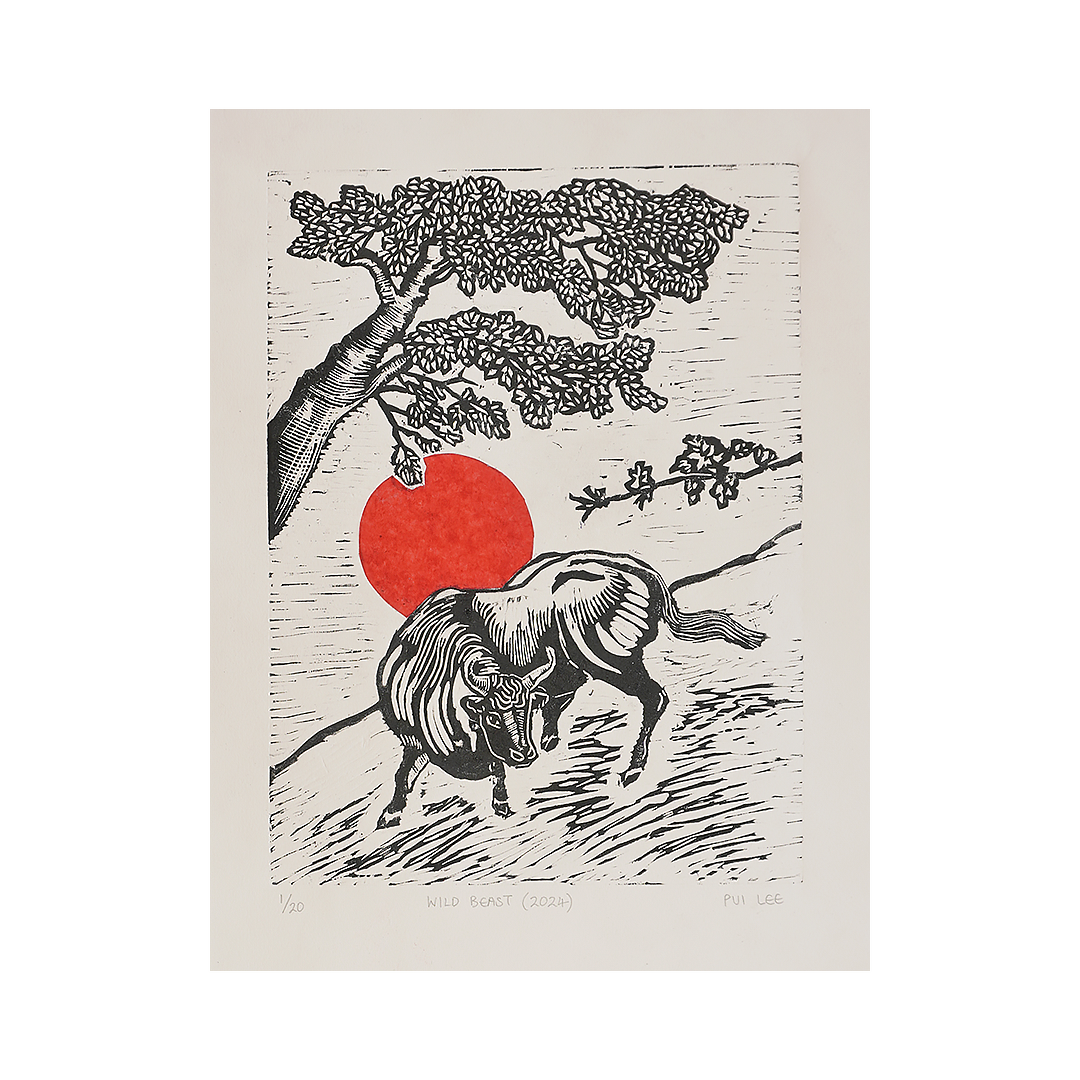
Information
-
About this print
I see printmaking as an extension of my drawing practice and I believe drawing is essential for any artist. My current print work consists mainly of woodcut prints. The long and labour-intensive process allows me to work directly with materials and I enjoy the physicality of hand-carving into the Japanese plywood to create striking print images for others to enjoy. Printmaking using woodblock has oriental cultural connections attached to it and this has significance to me because I believe it is important to remember where you have come from and how this makes who you are today. A recent research trip to China has allowed me to extend my knowledge and experiences further into this beautiful art-form and I got a lot of inspiration from my time there.
The "Endless Forms, Most Beautiful" project at Northern Print has enabled me to continue exploring my love of animals further; and crucially, has widened my awareness about those species, which are endangered in the world today. It was a trip to Berwick Museum and Art Gallery that led me to find out about the notorious Chillingham Bull, which I discovered is one of the rarest animals on the planet! They are the sole survivors of ancient herds that once roamed the forests of Britain. These small white cattle are unique in their appearance with their mottled faces, Viking-like upright horns and coloured ears. There is also a commemorative panel on the pavement of Newcastle's Bewick Street featuring wood engraver Thomas Bewick’s famous Chillingham Bull illustration of 1789.
Currently totalling about 130, the Chillingham cattle are important as a scientific marvel because they have had no human interference since the 1300s and have stood the test of time - despite all the challenges that life has presented itself along the way! They have certainly fascinated the likes of English naturalist Charles Darwin who famously said, "It is not the strongest of the species that survives, not the most intelligent that survives. It is the one that is the most adaptable to change."
There is much mystery and wonder surrounding the origins of these resilient yet unpredictable creatures too. Once upon a time, these cattle were considered sacred and pre-Christian pagans would sacrifice them to their gods. Later in their history, this Northumberland herd both defended and fed the inhabitants of Chillingham castle. Now, they are left to live and roam free in a large enclosed park there; but be warned - these cattle are far from docile and domesticated creatures because if cornered, they will most certainly fight back. Adorning battle scars unashamedly, they can change from placid cud chewers to potential killers in an instance. ...Quite the wild beast indeed! -Never to be handled or tamed; and importantly, always looking after their own." -
Endless Forms, Most Beautiful
Read MoreA new bestiary and herbarium for at risk species by artists from Northern Print.
“Endless Forms Most Beautiful” is made possible with The National Lottery Heritage Fund. Thanks to National Lottery players, we have been able to support visits, new printmaking and school’s programme for this project.
Northern Print artists bring together traditional printmaking and the natural world with a series of new prints highlighting the diversity of species that are categorised as ‘at risk’.
The ‘endless forms’ include marine life; plants; birds; insects and mammals with many familiar and much-loved species as well as less known and intriguing creatures that have captured the imagination and hearts of Northern Print’s artists.
This exhibition of 45 new prints has been made following a series of visits to our region’s natural history collections and habitats and represents the tiniest tip of the iceberg of our natural world under threat.
The artwork includes a range of approaches and printmaking processes – including heritage craft skills also deemed at risk including letterpress and mould-made papers
